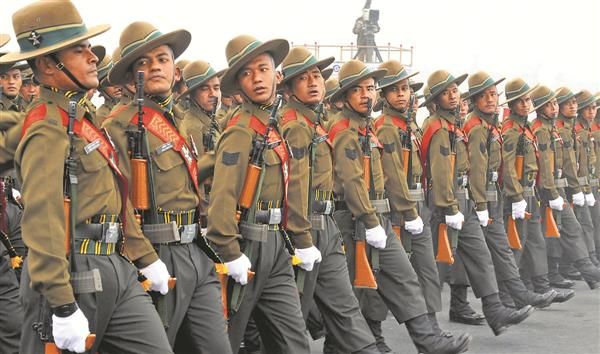SOURCE: AFI

The Gorkha soldiers, renowned for their valor and combat prowess, have long been an integral part of the Indian Army. However, recent geopolitical shifts and evolving socio-political landscapes in Nepal have cast a shadow over this historic recruitment practice. As India grapples with these changes, the future of Gorkha recruitment stands at a crossroads, raising significant questions about tradition, loyalty, and regional diplomacy.
The Gorkha regiments of the Indian Army trace their origins back to the early 19th century, during the British colonial period. The Treaty of Sugauli in 1815 marked the beginning of this enduring relationship, with the British East India Company recruiting Gorkhas from Nepal. Post-independence, India continued this tradition, recognizing the Gorkhas’ exceptional martial qualities and their crucial role in various military engagements, from World War II to the Kargil conflict.
In recent years, Nepal’s domestic policies and its foreign relations, particularly with China, have influenced the dynamics of Gorkha recruitment. The introduction of the Agnipath scheme by India, aimed at recruiting soldiers for shorter durations, has met with resistance from potential Gorkha recruits and the Nepali government. Concerns about job security, benefits, and the long-term implications of such a scheme have led to a decline in interest among Nepali youth.
Furthermore, Nepal’s growing closeness with China poses a strategic dilemma for India. As Nepal navigates its foreign policy to balance its relations with both its powerful neighbors, India’s reliance on Nepali Gorkhas in its military might be perceived differently. This shift has prompted India to reconsider and possibly restructure its recruitment policies to adapt to the changing geopolitical environment.
The Gorkha recruitment issue is not merely a military concern but also a socio-political one. The Gorkha soldiers have been symbols of pride and cultural heritage in Nepal. Any changes to this long-standing tradition could have broader implications for India-Nepal relations. The youth in Nepal, increasingly aware of global opportunities and their national identity, might view traditional recruitment avenues differently than previous generations.
The Agnipath scheme’s introduction and its lukewarm reception among Nepali recruits highlight the need for India to engage more actively with Nepal. Dialogues focused on addressing the concerns of the recruits, ensuring fair benefits, and respecting Nepal’s national sentiments could pave the way for a more sustainable recruitment model.
To navigate this complex issue, the Indian Army and the Indian government need to adopt a multifaceted approach. Firstly, engaging in diplomatic dialogues with Nepal to address concerns and reinforce mutual benefits is crucial. Secondly, reassessing and possibly modifying the Agnipath scheme to make it more appealing to Gorkha recruits can help maintain the tradition while adapting to modern needs.
Additionally, exploring the recruitment of Gorkhas from within India, especially from regions with significant Gorkha populations, could be a viable alternative. This would not only preserve the martial tradition but also mitigate some of the geopolitical challenges.
As India rethinks its approach, the goal should be to honor the legacy of the Gorkha soldiers while adapting to the evolving regional dynamics, ensuring that this historic bond remains strong and relevant in the years to come.